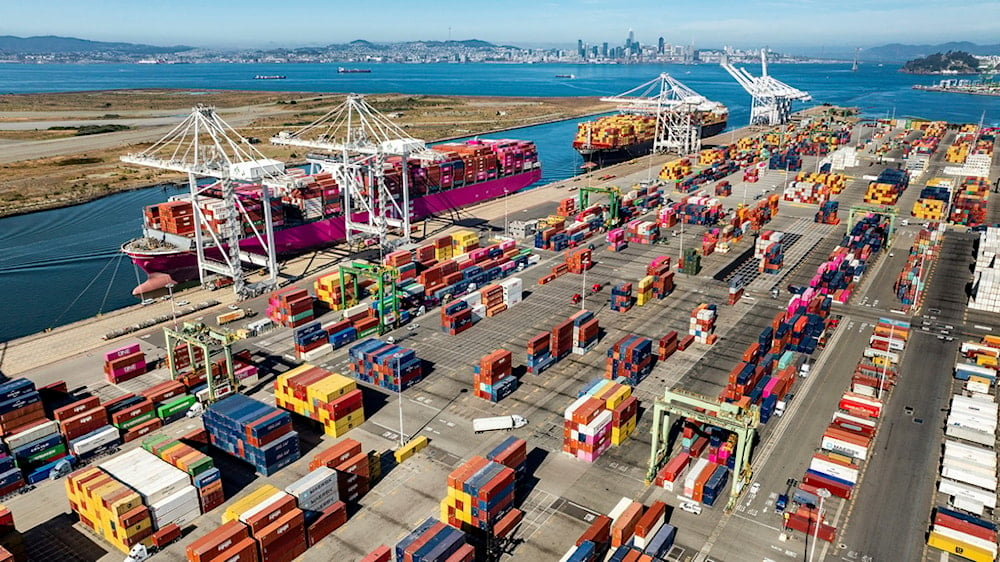US producer prices jump 0.9% in July, fastest pace since 2022
US producer prices rose 0.9% in July, the fastest pace since 2022, driven largely by services and food costs, as Trump's renewed tariffs on imports like steel, aluminum, and other goods intensified inflationary pressures and added to challenges for the Federal Reserve.
-

Cargo containers are seen at a shipping terminal at the Port of Oakland on Wednesday, Aug. 6, 2025, in Oakland, Calif, US (AP Photo/Noah Berger)
Producer prices in the United States rose sharply in July, marking the fastest pace since 2022, as businesses faced mounting costs linked to President Donald Trump's trade measures. The latest figures showed a far bigger increase than anticipated, with services leading the gains over goods.
According to the Department of Labor, the producer price index (PPI) advanced 0.9% from June, following no change the previous month. Analysts surveyed by Briefing.com had expected only a 0.2% rise. On a yearly basis, the index climbed to 3.3%.
Goods prices grew by 0.7%, while services jumped 1.1%, the steepest monthly increase since March 2022. The Labor Department noted that "more than three-quarters" of July's overall rise was due to services, particularly trade services, which track changes in margins for wholesalers and retailers.
A significant portion of the goods increase came from food, with the report stating, "A quarter of the July advance in the index for final demand goods can be traced to prices for fresh and dry vegetables, which jumped 38.9 percent."
Tariffs Fuel Inflation
The spike in wholesale prices adds to growing signs of strain from Trump's revived tariff agenda. As reported last month by The Wall Street Journal, inflationary pressures have been building since steep levies, 10% on most imports and 50% on key sectors like steel and aluminum, were reimposed earlier this year. Prices for industrial metals have climbed sharply, with copper hitting record highs, and economists warn these increases could ripple across industries such as construction, data centers, and semiconductor manufacturing.
"Input costs for producers jumped in July as price pressures for businesses build from compounding tariff impacts," Ben Ayers, senior economist at Nationwide, told AFP. "While businesses have assumed the majority of tariff costs increases so far, margins are being increasingly squeezed by higher costs for imported goods." He added that tariff-related price hikes are particularly visible in metals and food categories.
Speaking to AFP, Matthew Martin, senior economist at Oxford Economics, noted, "Tariff-exposed goods are rising at a rapid clip, indicating that the willingness and ability of businesses to absorb tariff costs may be beginning to wane." Economists also caution that labor market strains, particularly in industries reliant on immigrant workers, could compound the inflationary impact, raising unemployment risk in the coming years.
For the Federal Reserve, the challenge is now twofold: managing inflationary pressures driven by trade policy while monitoring a labor market that is beginning to show early signs of cooling. The combination could complicate decisions on the timing and scale of the next interest rate cut.
Read more: Trump fires labor statistics chief following disappointing July report

 3 Min Read
3 Min Read










